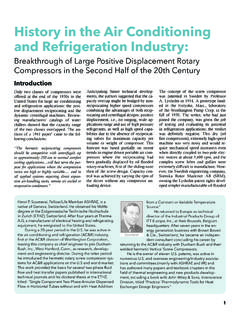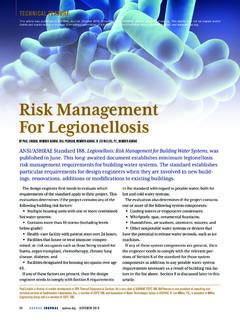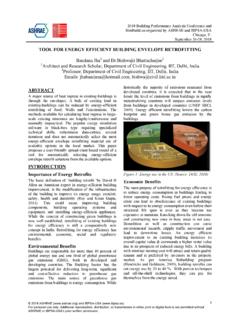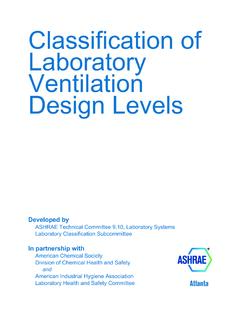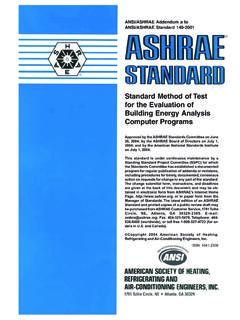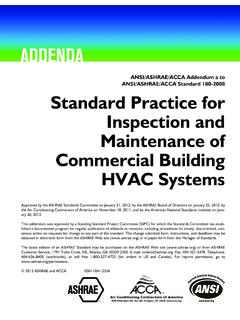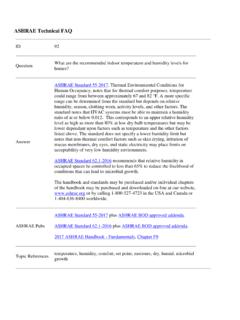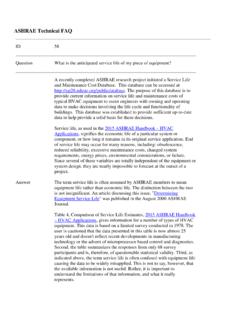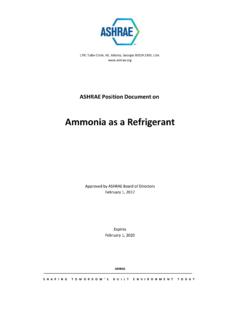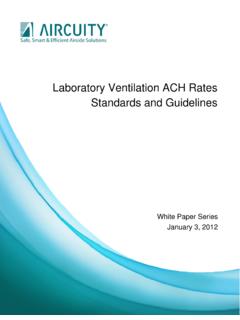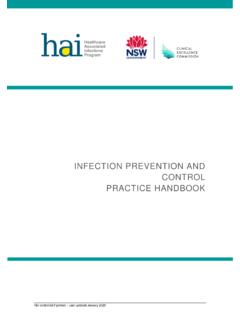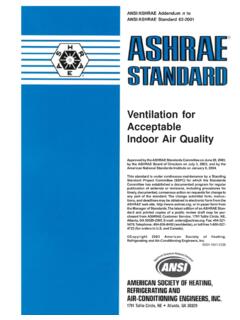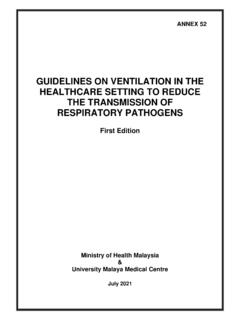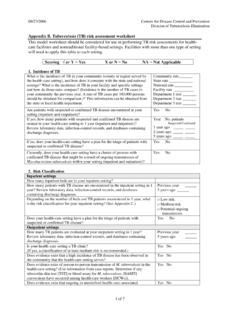Transcription of Hospital Operating Room Ventilation Systems
1 ASHRAE JOURNAL MAY 201814 TECHNICAL FEATUREK ishor Khankari, , is president at AnSight LLC in Ann Arbor, Fluid Dynamics (CFD) Analysis of Hospital Operating Room Ventilation Systems BY KISHOR KHANKARI, , FELLOW ASHRAEThe primary objective of Hospital Operating room (OR) Ventilation Systems is to mini-mize surgical site infection due to airborne contaminants and bacteria and to provide a comfortable environment for surgeons and other staff in the room. The key factor in reducing surgical site infection is to minimize the contamination of the sterile (clean) zone where the surgical procedures are performed.
2 One source of infection in the OR is squames, which are skin scales shed from the exposed skin of occupants in the Once airborne, these bacteria-carrying particulates generally follow the path of airflow in the room. The OR Ventilation system should effectively sweep these particulates out of the sterile zone and minimize their re-entrainment from non-sterile (contaminated) Standard 170-2017 2 provides minimum requirements for the design and layout of the ventila-tion Systems in Operating rooms which presumably can maintain a sterile environment around the surgical site.
3 According to this standard, diffuser array should provide airflow over the patient and surgical team. Furthermore, the coverage area of the primary supply diffuser array should extend a minimum of 12 in. (305 mm) beyond the footprint of the surgical table on each side. The room should be equipped with at least two low sidewall exhaust grilles placed at opposite corners, with the bottom of these exhaust grilles installed approximately 8 in. (203 mm) above the floor. In addition, the OR should maintain positive pressure with a total of 20 air changes per hour (ACH) supplied with 4 ACH outside air.
4 The supply air should be unidirectional directed downward with an average discharge velocity of 25 to 35 fpm ( to m/s). These specifications for minimum discharge veloci-ties are based on previous CFD studies, which concluded that such velocities and the coverage area of the diffuser array would overcome the rising buoyant plumes from the sensible heat sources ( , surgical lights in the ster-ile zone), as well as protect the surgical site by allowing a local thermal plume to develop from a relatively warm surgical The later assumption, however, could not be verified by the ASHRAE-funded research project on Part I.
5 Analysis of Air change RatesThis article was published in ASHRAE Journal, May 2018. Copyright 2018 ASHRAE. Posted at This article may not be copied and/or distributed electronically or in paper form without permission of ASHRAE. For more information about ASHRAE Journal, visit 2018 ASHRAE JOURNAL15experimental evaluation of Hospital OR Ventilation It should be noted that the role ASHRAE standards is to provide only minimum requirements, which may not be the optimal design is the primary carrier of heat, moisture, contami-nants, and airborne particulates in Operating rooms.
6 The distribution of supply air and the associated flow path of the air determine the resulting air velocities, temperature, and concentration of contaminants, and flow path of air-borne particulates at various locations in the room. Such distribution, in turn, determines thermal comfort, air quality, and potential for transmission of airborne particu-lates. Ideally, in an Operating room the supply air should pass through the sterile zone and exit through exhaust grilles in a single pass manner without recirculation and mixing with the supply airstream.
7 It is generally believed that high air change rates can yield a cleaner environment in the Operating rooms. However, recent studies indicate increasing ACH does not necessarily provide a cleaner envi-ronment but substantially increases the Operating airflow patterns, temperature distribution, and resulting flow path of airborne contaminants can depend on several interrelated factors including the location, type, and number of supply diffusers; supply air change rates and supply air temperature; locations and strengths of various heat sources in a room, including the ambi-ent and surgical lights.
8 Size and location of equipment in the room that can obstruct the flow path of the air and contaminants; size and locations of room returns; and perhaps also on the frequency of opening and closing OR doors. Physical testing and real time measurements of all the parameters that can affect the performance of the OR ACH = 23 ACH = 15 ACH = 31 FIGURE 1 Diagram of CFD model of a Hospital Operating room. (Left) Isometric View. (Right) Plan MachineLaminar Diffusers (9)Overhead LightsDoor Leakages (2)Waste DisposalReturn Grilles (2)Back TableScreensSurgical Lights (2)AnesthesiologistBack TableScrubbing NurseFIGURE 2 Airflow patterns at central plane in the Operating room for three differ-ent ACH showing similar airflow patterns.
9 With air recirculation and entrainment at the edge of the sterile JOURNAL MAY 201816 TECHNICAL FEATURE FIGURE 3 Contours of air velocity at central plane in the Operating room for three different ACH rates showing the discharge air accelerates as it approaches the Operating table, with higher velocity zones (shown in red) occurring near the edge of the sterile zone at higher 4 Contours of air temperature at central plane in the Operating room showing thermal stratification occurs at all three different ACH, and increasing ACH minimizes the contraction of the supply air jet and decreases the average temperature in the system including the airflow patterns and the resulting flow path of contaminants is not feasible, if not ,4,5.
10 6 In such situations CFD analyses may pro-vide a feasible alternative based on sound scientific laws of physics, including laws of air motion and heat transfer. CFD analyses provide detailed three-dimensional visu-alization of airflow and temperature distributions ulti-mately leading to valuable insights of airflow patterns and the resulting flow path of airborne main objective of this CFD study is to evaluate the impact ACH on the airflow patterns, temperature distribution, and on the probable flow path of airborne particulates in a typical OR.
